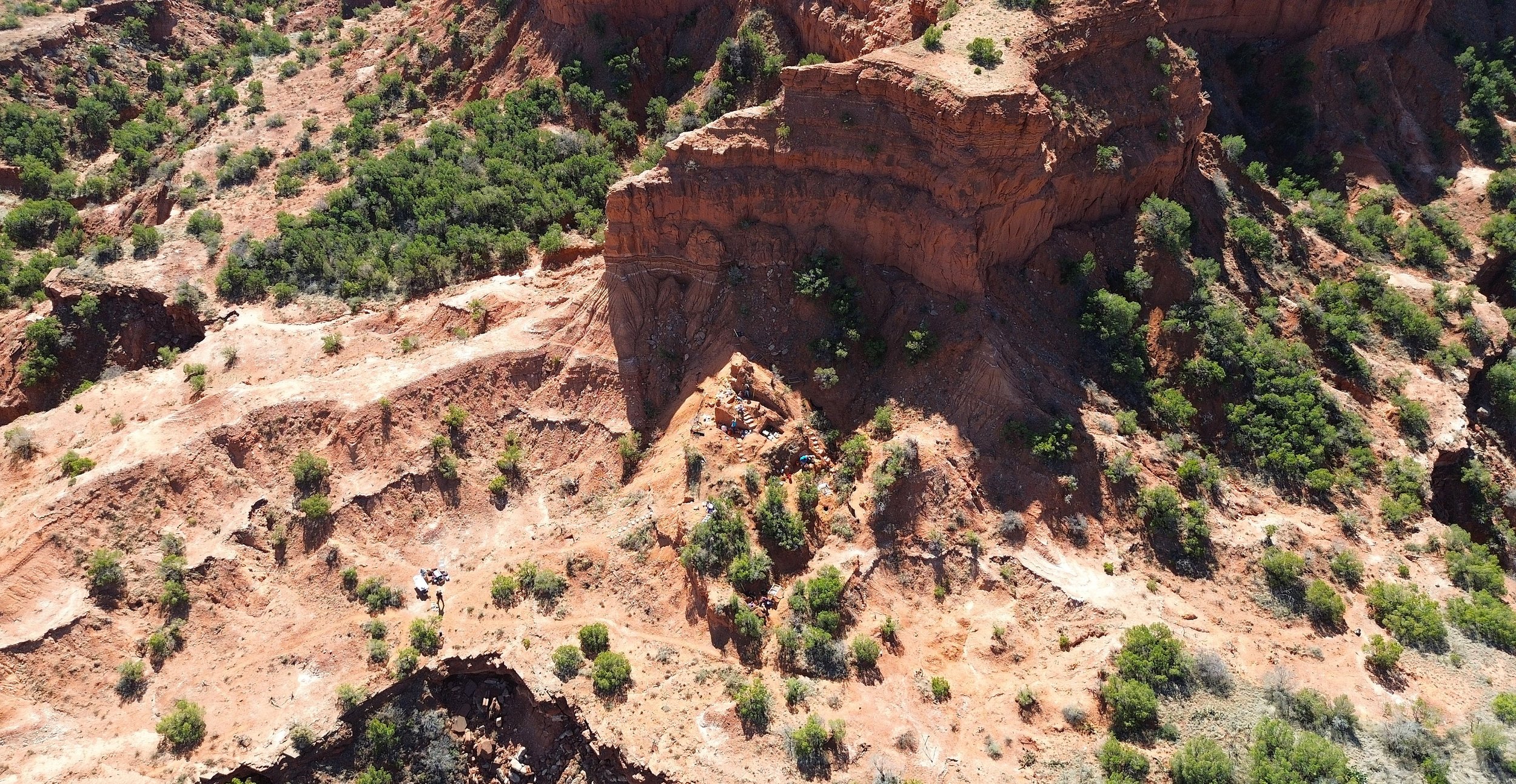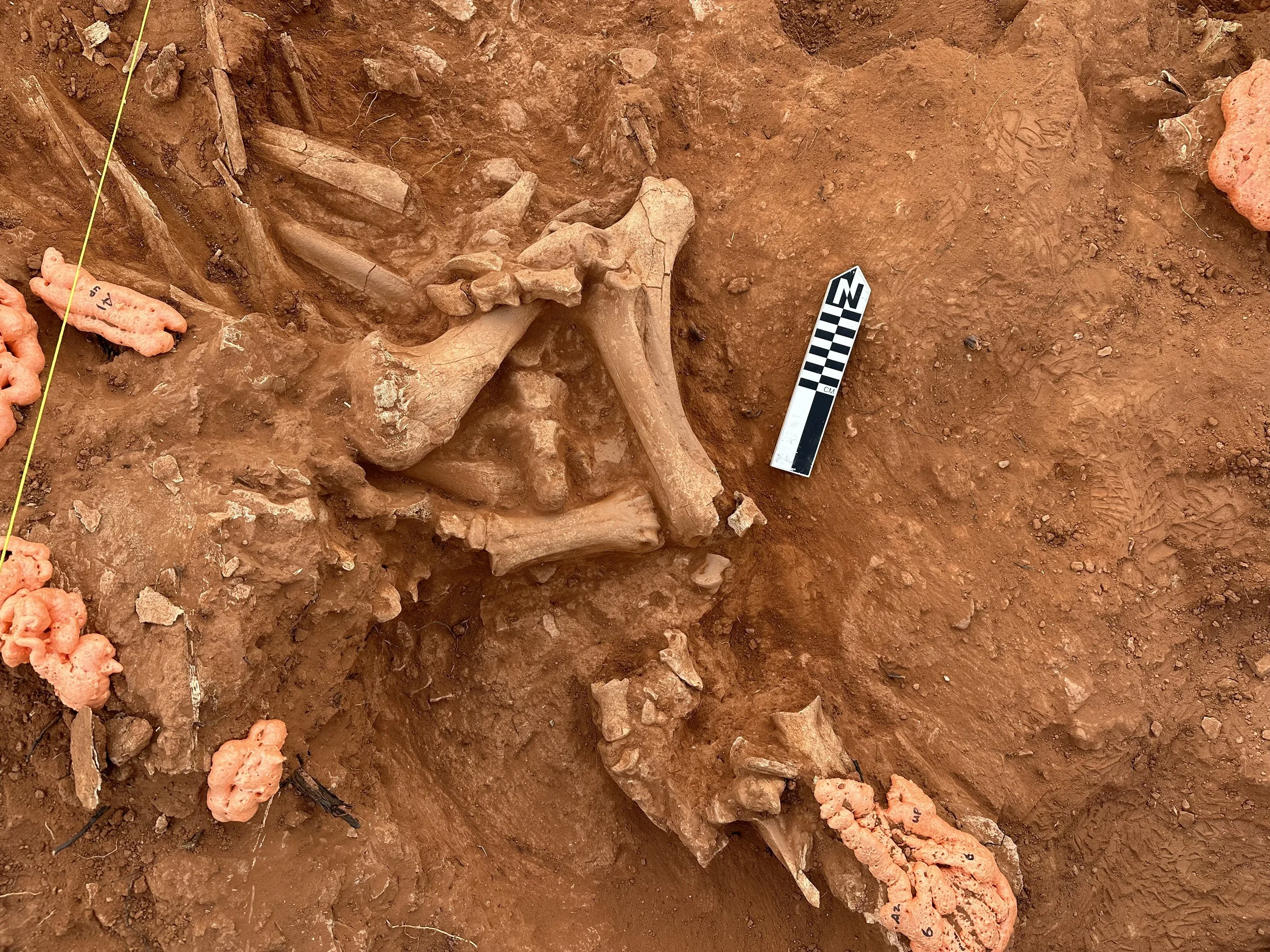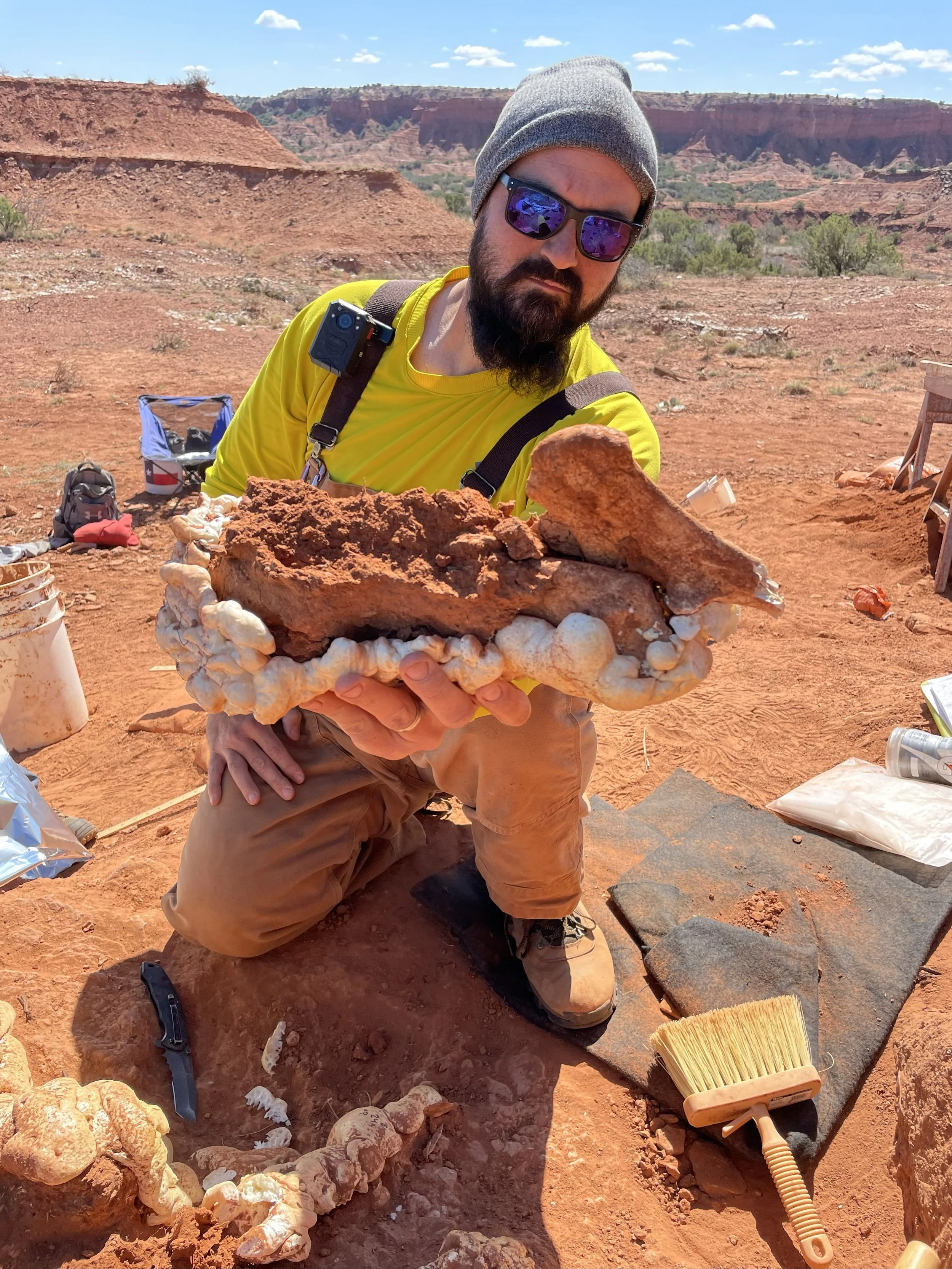Saving the Nighthawk Bison Jump
In 2021 Rick and Susan Day discovered bison bones eroding out of a slope directly below a cliff at Caprock Canyons State Park in Briscoe County, Texas. At the time the Days were local teachers at Matador ISD and they were scouting around the park to map out a science field trip for their students. Rick Day is a Texas Historical Commission steward and when he found the bison bones, he raised the alarm. Following several assessment trips by professional archeologists, the full uniqueness of the discovery was realized. The Days had located the second bison jump ever found in Texas. It has been nearly 60 years since the last bison jump was found. The location was later nicknamed Nighthawk after the nightjar birds observed nesting at the site.
Bison jumps are a renowned hunting method employed by Native Americans in which these animals were stampeded in mass over cliffs. There are around 200 known bison jump sites in the northern plains, but until recently only one site, Bonfire Shelter in Val Verde County, had ever been scientifically documented in the southern United States. As an outlier, the jump at Bonfire Shelter has long been viewed with doubt. The discovery of a second bison jump in the Texas Panhandle, validates Bonfire and adds critical data to understanding precontact bison hunting in the Southern Plains. The new discovery also overturns long held notions that Southern Plains people did not hunt bison using cliffs.
Overtime and after several visits by professional archaeologists, the significance and imperilment of the site was fully recognized. Nearly 70% of the site has been lost to erosion which continues to eat away at the bone exposures. A group of archaeologists resolved to act quickly to better assess and salvage the site through excavation. In 2023 Texas Tech University conducted test excavations at Nighthawk as part of a field school led by Dr. Brett Houk and Dr. Tamra Walter. These investigations showed that a large number of bison were present in several distinct areas. Stone tools were found scattered around on the surface including several projectile points. Radiocarbon dates of the bison bones showed that at least two components were represented. One component represented the Late Archaic period and another the Late Prehistoric period. This revealed that the hunting facility was reused over time. It also demonstrates that Late Prehistoric people in the region jumped bison, something that had never been documented before in the region.
The limitations of time and labor associated with the Texas Tech field school meant that excavators were only able to scratch the surface. Given the rarity and significance of this site it was it imperative to rescue more of the site. In 2023, Plains Archeological Research partnered with principal investigator Dr. Gus Costa to petition the Summerlee Foundation for funds that would allow a more thorough salvage excavation to be done. The Summerlee Foundation awarded the grant and Texas Parks provided matching funds. In the spring of 2024, our crews spent about 2 months excavating at Nighthawk.
The results of the investigations at Nighthawk are currently being prepared for publication. Overall, our work has shown that the site was used several times over 3000 years. The time depth and frequency of use implied by the data we have gathered at Nighthawk is exceptional. The site is among the most important bison jumps known. In 2023, we successfully petitioned to have it listed as a State Archeological Landmark. It is now well protected for posterity and although erosion is an ongoing concern, we have successfully salvaged a large sample of the archeological deposits that will help us in better understanding the untold story of precontact bison hunters in the Texas Panhandle.

Bison bone outcropping in slope deposit

Distribution of known bison jumps (modified from Byerly et al. 2005

Bison cow skull from oldest kill component 3500 B.P.

Microphotography of cutmarks on bison mandible likely reflecting toungue removal activities

Dr. David Kilby and Ashley Eyeington excavate a complete bison forelimb articulated in situ

Dr. Gus Costa applying consolidant to fragile bison bone (Photo Credit Chris Lintz)

Slope deposit below cliff
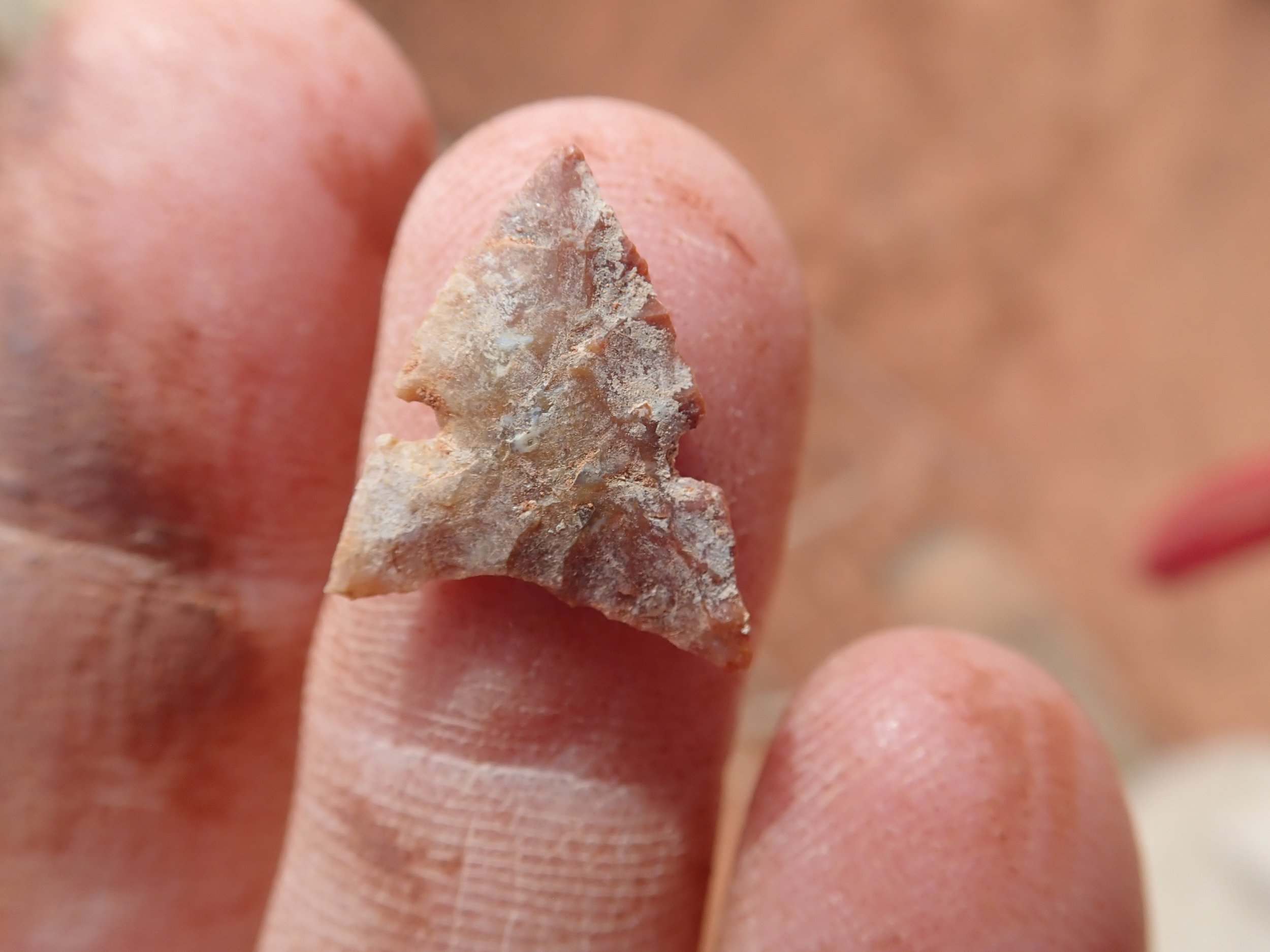
Washita arrow point found in Late Prehistoric bison kill bone bed

Articulated tail bones (Image Credit Brittany Bailey)
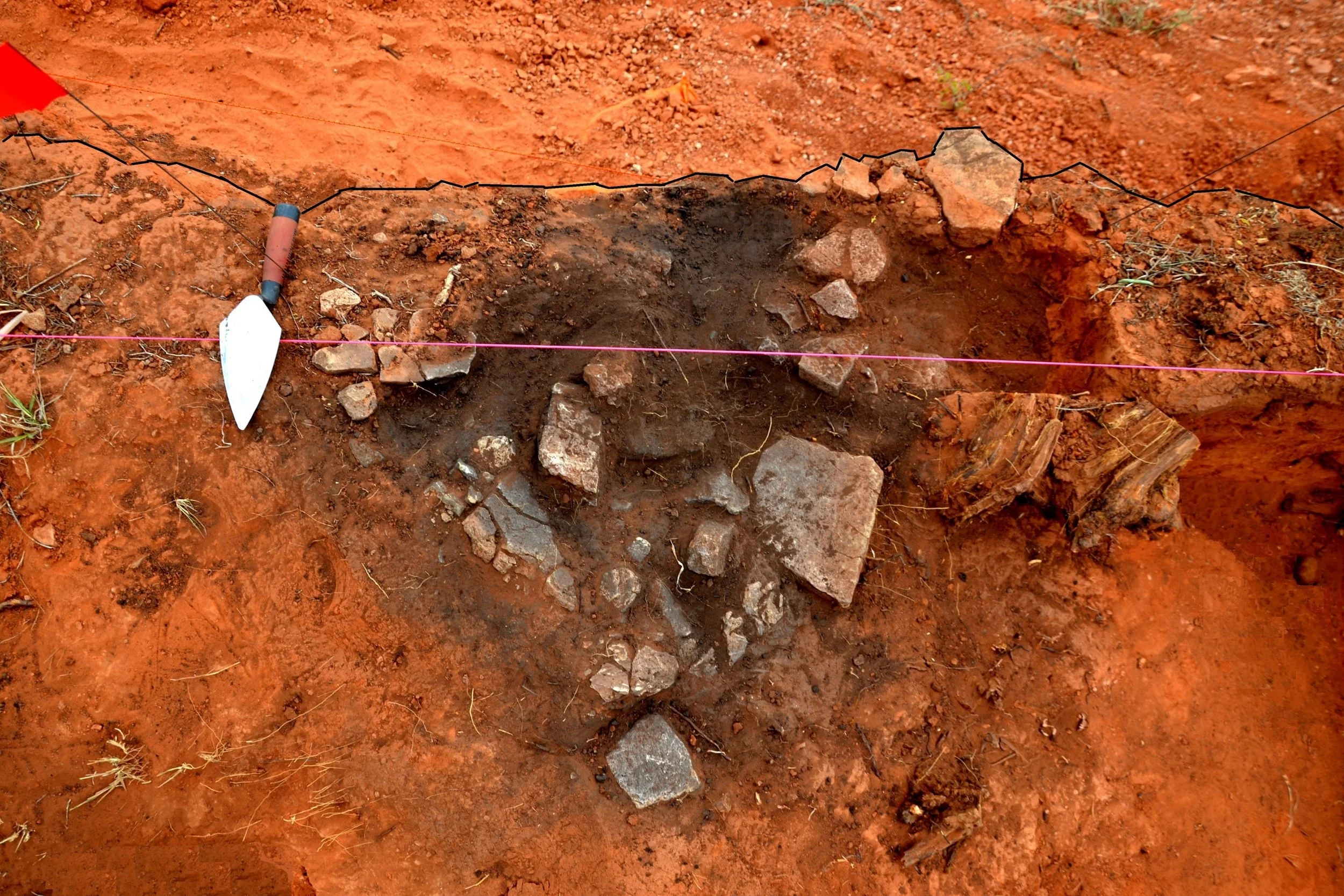
Rock cooking feature adjacent to kill (Photo credit Chris Lintz)

Crew mapping Kill 1 bison bones

Texas herd bison posing in Caprock Canyon State Park (Image Credit Richie Rosencrance).

Excavators at top of Kill 3 bone bed
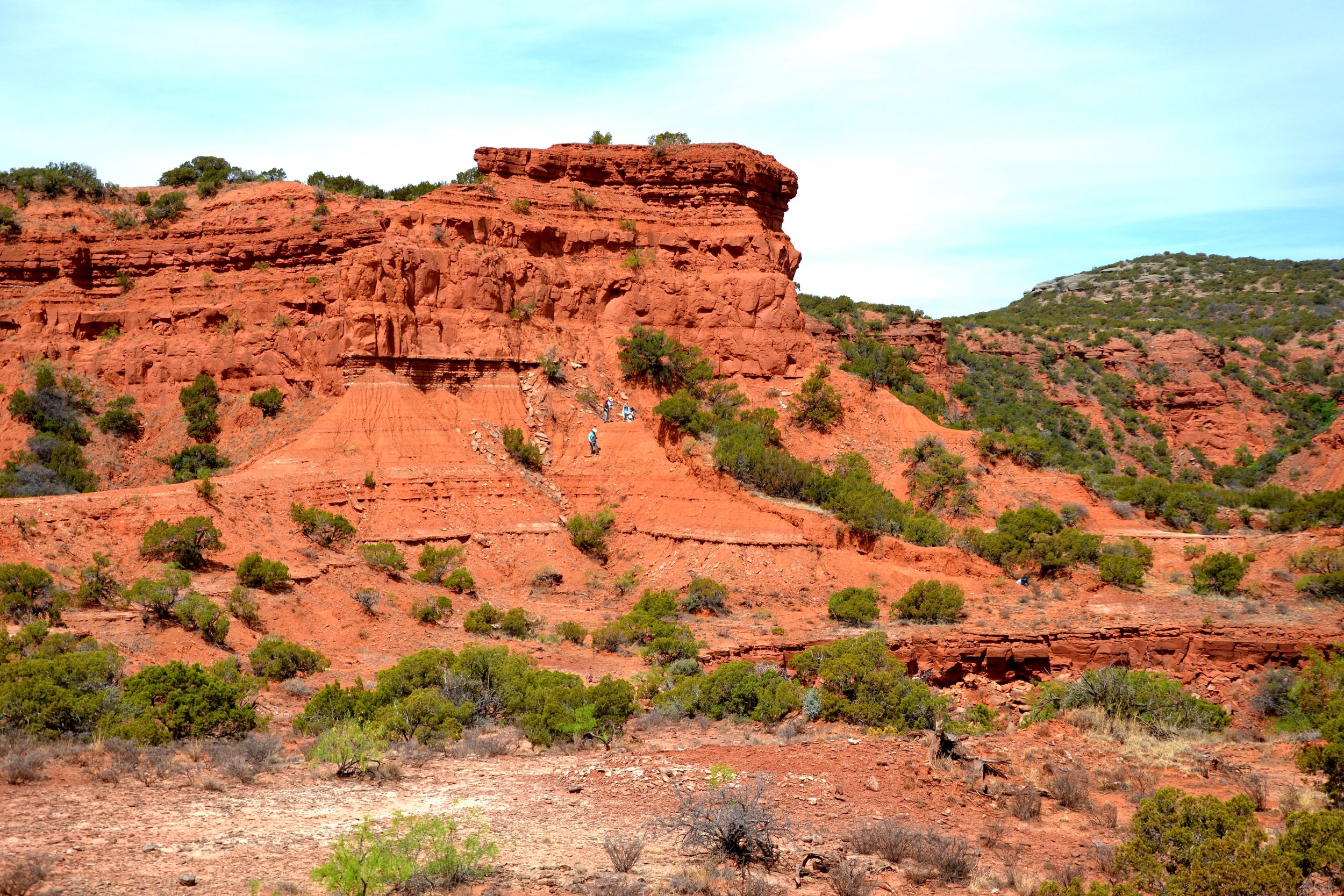
View of cliff and site

Excavators at base of Kill 3 bone bed (Image Credit Brittany Bailey)

View of slope deposits (Photo Credit Chris Lintz)

Brittany Bailey excavating near the top of Kill 3 bone bed, (Image Credit Brittany Bailey)
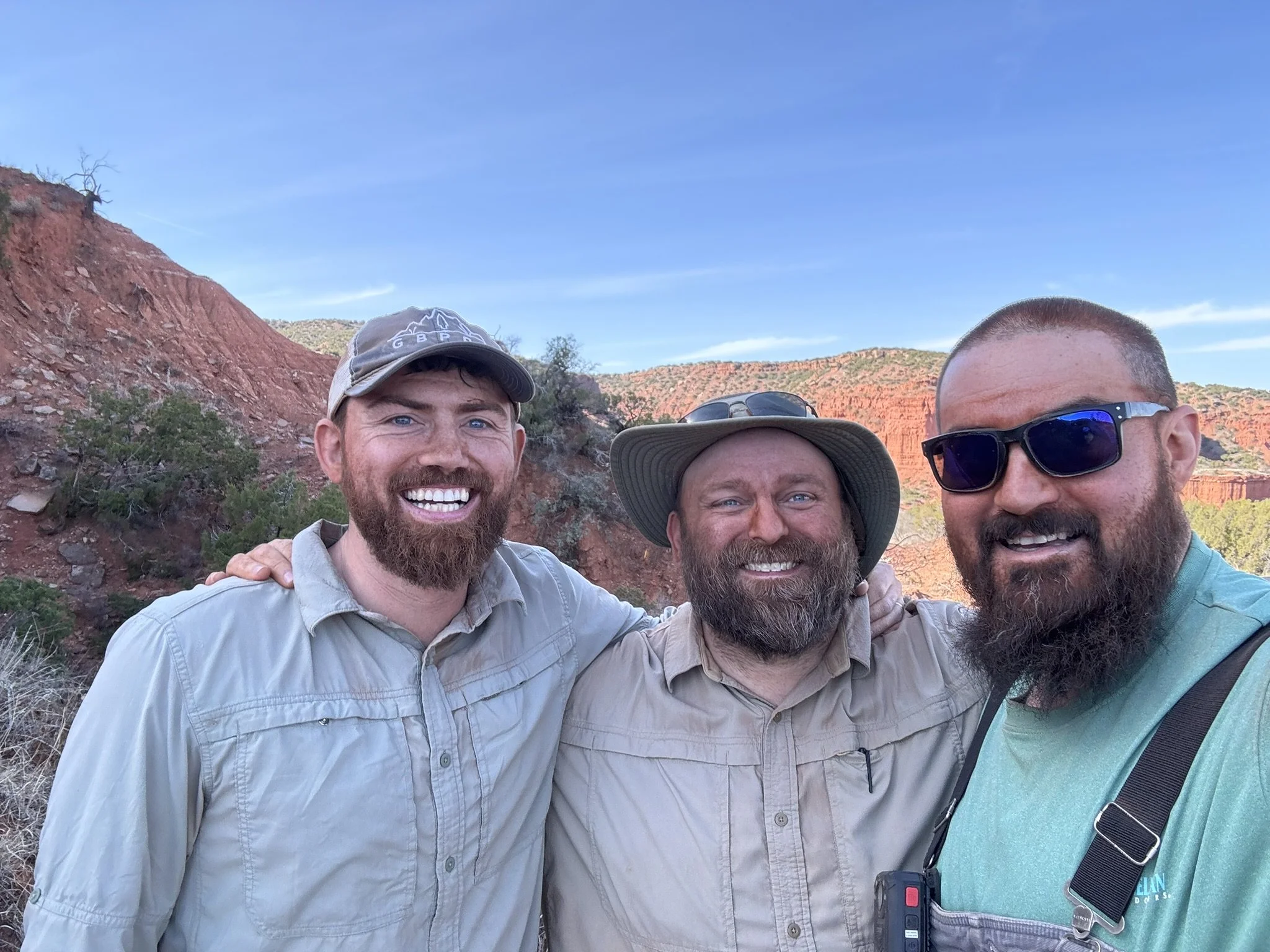
Richie Rosencrance, Jerod Roberts and Gus Costa
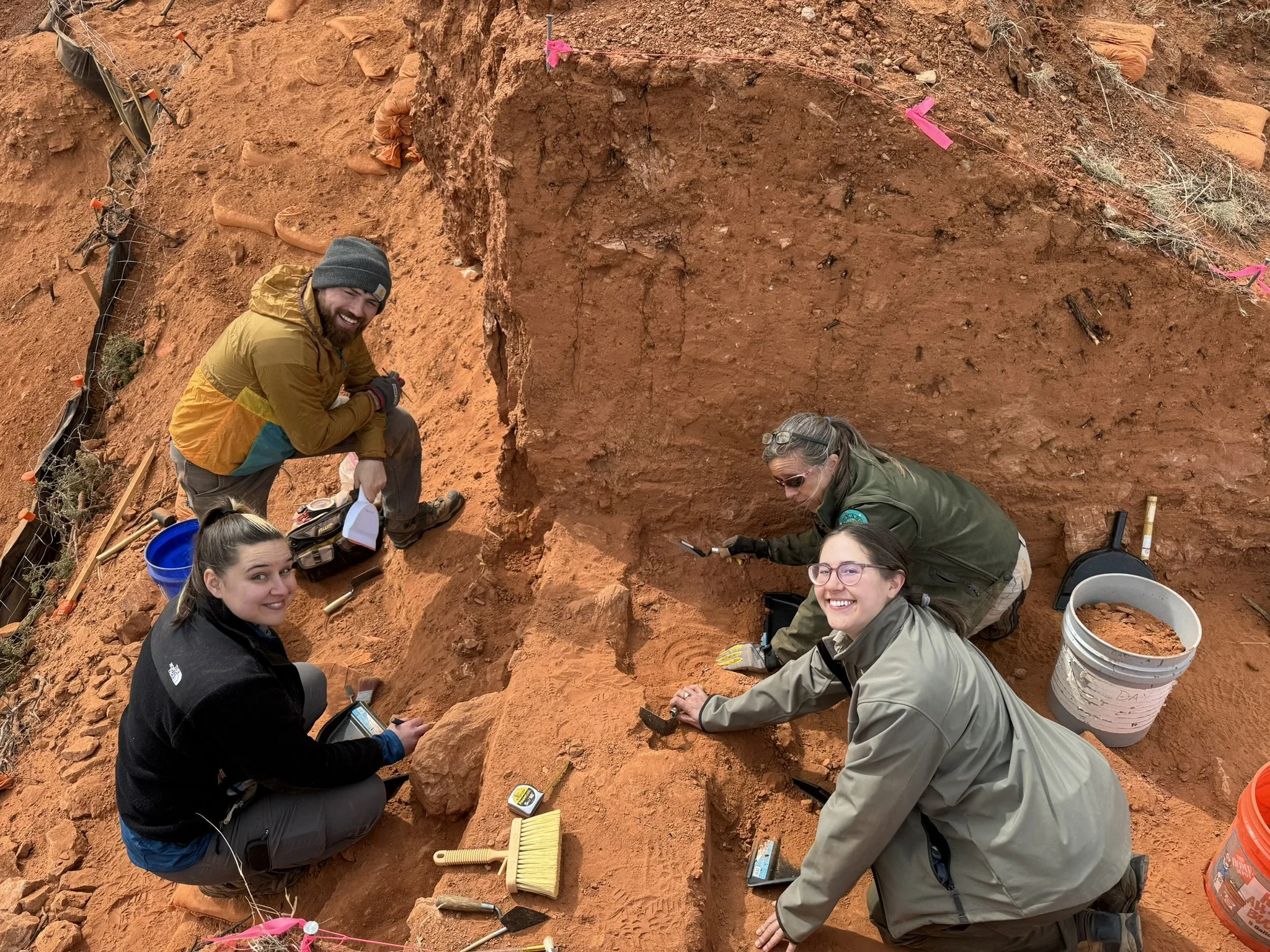
Excavation crew
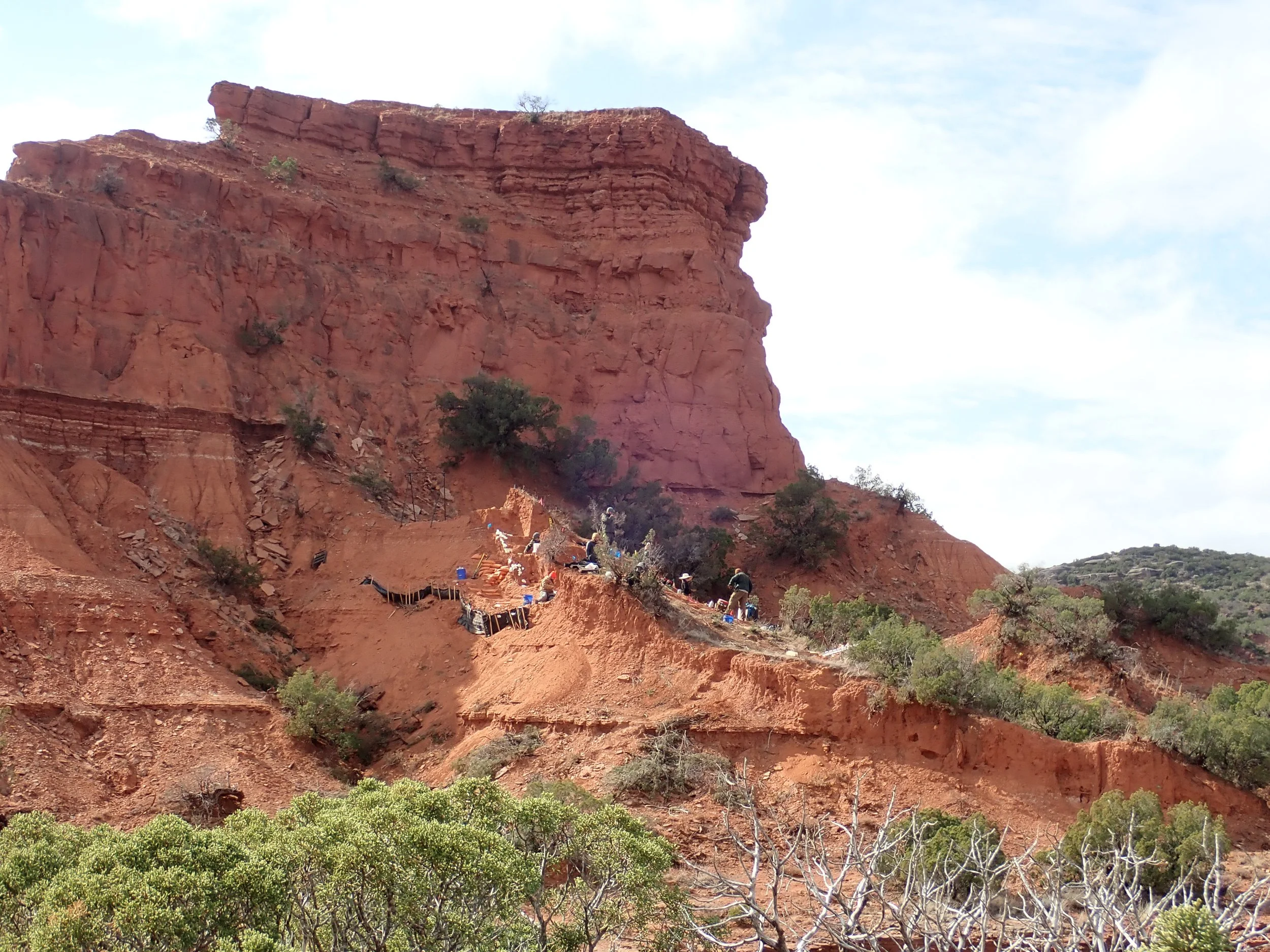
View of site deposits and jump off

Excavation crew working Kill 3 bone bed (Photo Credit Ken Lawrence)
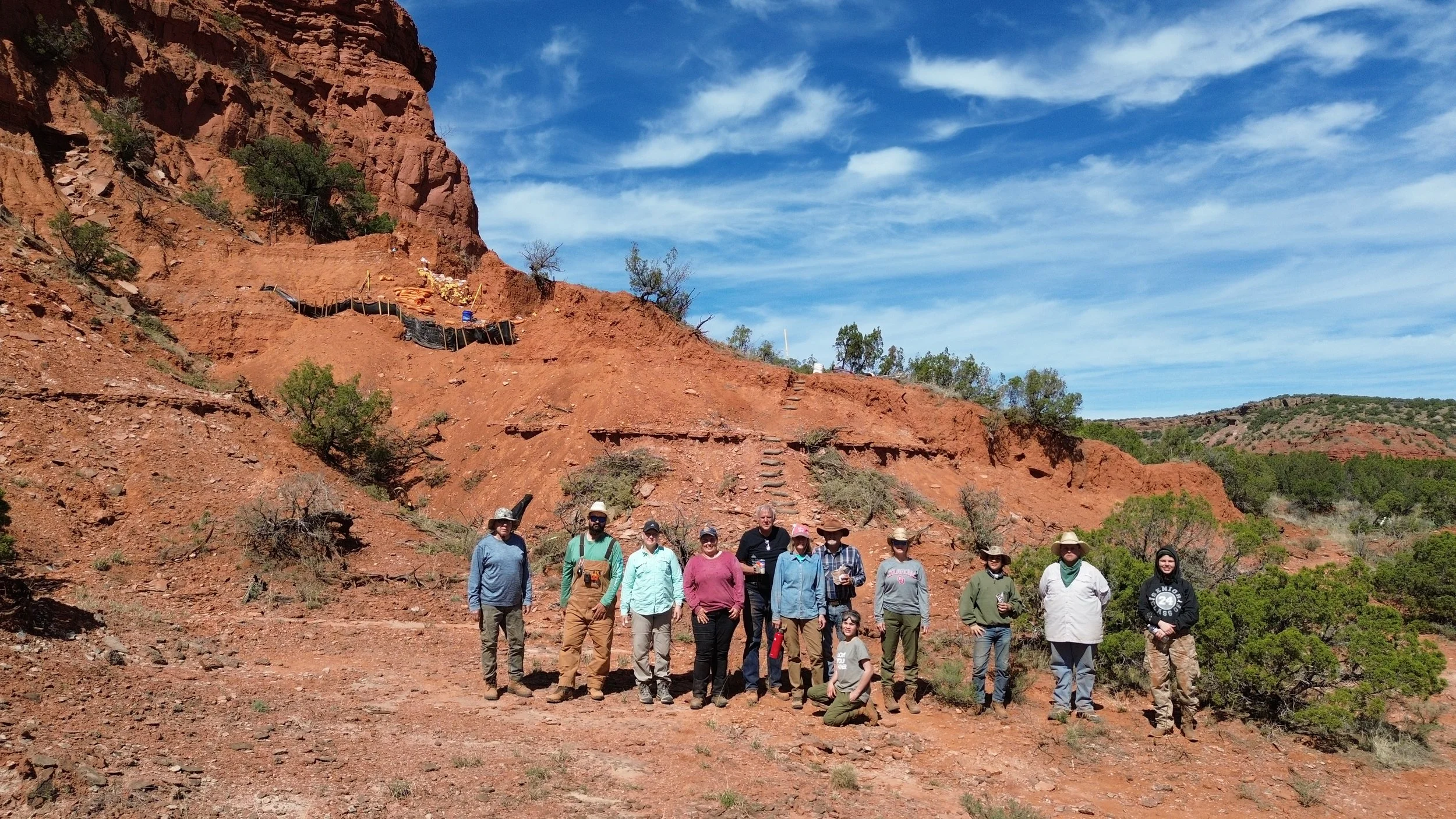
Volunteer field crew

Volunteers and TPWD field crew
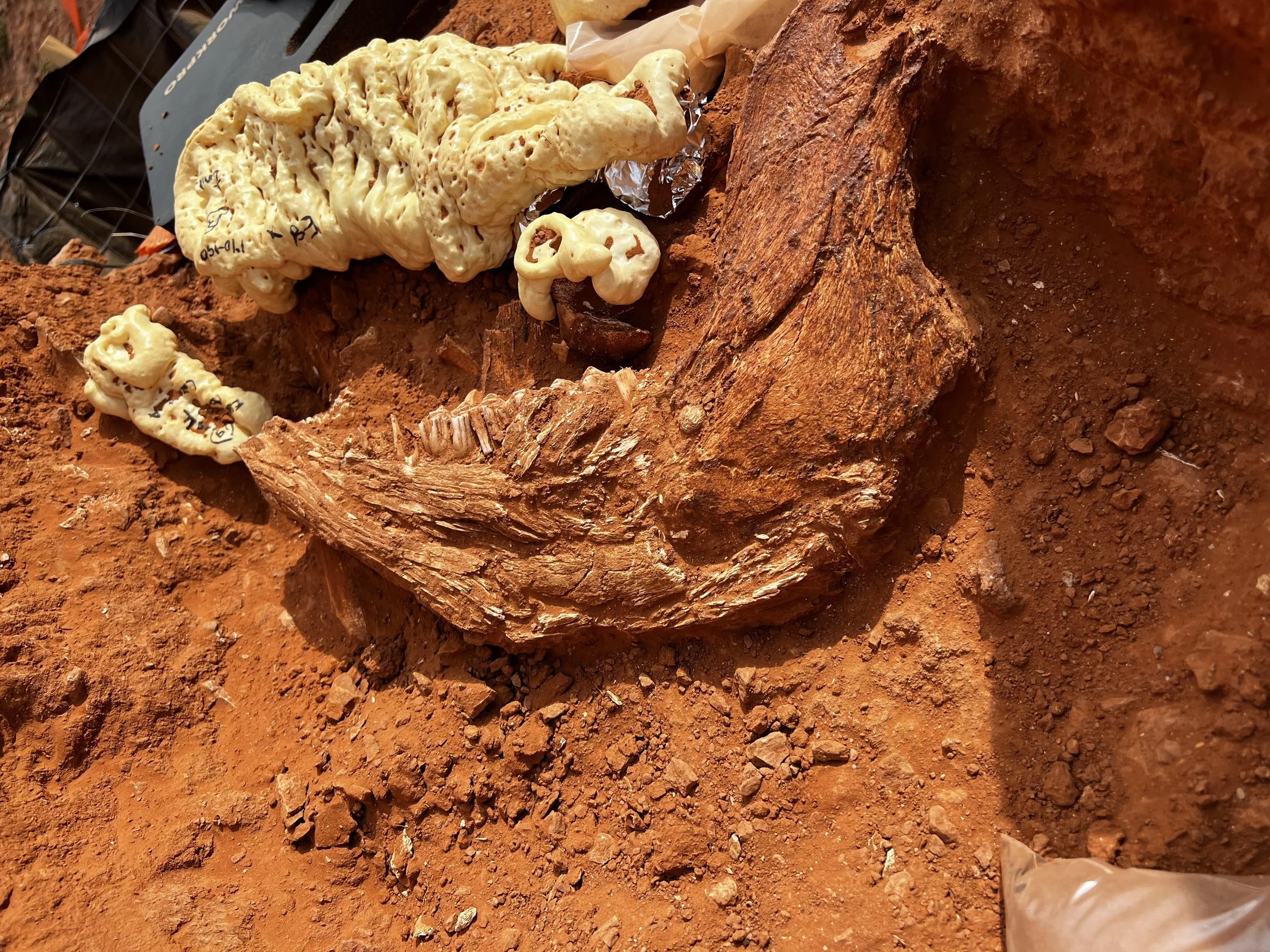
Mandible in situ

